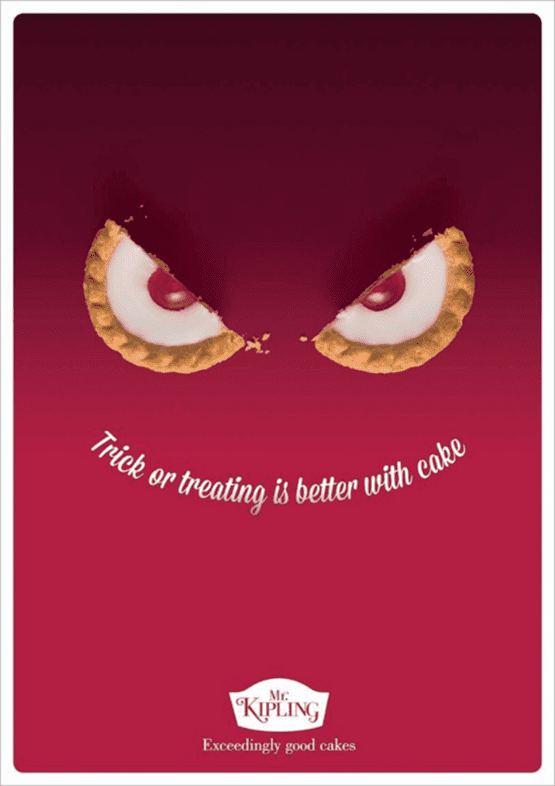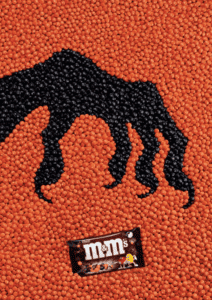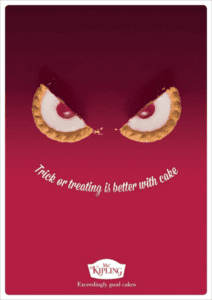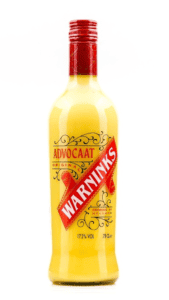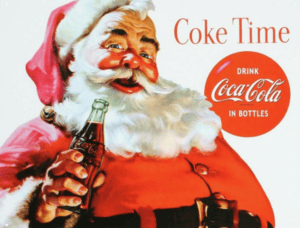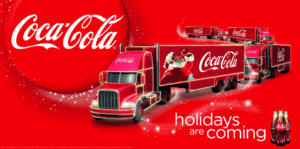There’s something about the changing seasons that provokes a desire for change in our lives. To dispense with the old and embrace the new. To look forward.
Whether we’re looking forward to Christmas, or the next spring or summer, we’re hopeful for the future – in our thoughts, that life is somehow going to be better than it is now.
In marketing, it’s no different – the change in seasons brings news opportunities to grow our brand, to grow market share. New ways to sell.
And what is it we do as marketers?
We sell hope for the future.
We sell the promise of what life will be like when you’ve bought our product.
If we’re selling ice cream, we associate the food with good times in the sunshine; we sell the hope that we’ll feel happy, carefree and light of heart as we consume more dairy than we probably should. It’s a positive future – we never mention the crushing despair we feel when we next get on the scales.
If we’re selling funeral plans, we’re selling the hope that even when we’re dead (presumably from a heart attack linked to ice cream-driven obesity), the future will be better, or more tolerable, for the people we leave behind.
Buy our product and (at some point in the future) you’ll be better, happier, cooler, more successful, more loved.
In seasonal advertising, we’re not just painting a picture of a possible scenario at an (as yet) undisclosed moment in the future, we’re giving the consumer an insight into what their life could be like at a very specific point in time.
Happy Halloween
So, in the buildup to Halloween this year you’ll probably have seen loads of Halloween-themed ads.
Essentially ads that say, “Hey, it’s Halloween; you like Halloween; we like Halloween; so let’s do Halloween together”.
“You like having fun at Halloween, we’re having fun with our advertising at Halloween, so why don’t you buy our product this Halloween? You’ll have more fun this Halloween if you buy this thing.”
That’s pretty much it, it’s not strategic, it’s very tactical.
Not that there’s necessarily anything wrong with being tactical; when the bandwagon is rolling, and gaining momentum, sometimes you’ve just got to get on it and ride it as far as you can. When the name of the game is sales, and your market is prone to buying more stuff at specific times of the year, then opportunistic, short-term tactics can be necessary to balance the books.
Personally, I detest Halloween. Can’t stand it. Pointless, commercialised, piece of shit US import. Wouldn’t buy anything associated with it.
That said, there are a few Halloween ads that have made me look again at a product that I might not otherwise have considered; I don’t have to like Halloween to notice a great ad that feeds off the seasonal zeitgeist.
This Halloween ad by Mr Kipling stands out. It’s a few years old now, but (in my view) has never been surpassed as a really simple, enjoyable and well executed seasonal offering.
And you can see how easily the principle can easily be translated to other times of the year – Easter, Mother’s Day and of course… Christmas.
Merry Christmas to one and all
Just around the corner, we have Christmas, the time of year when we all, to one degree or another, lapse into at least a small degree of insanity.
We all seem to need Christmas. The idea of Christmas being all but ‘cancelled’ during the pandemic was an anathema to most of us.
It’s a time of year when we love to spend money. We buy way more than we need, more decorations, more presents. We spend £50 or more on a dead tree. We light up our houses (God knows what the bill will be this year). We buy more food, more drink.
It’s the only time of year we buy sprouts, bread sauce (why?), advocaat and brandy butter.
All fueled by Christmas advertising, all selling us the hope of the perfect Christmas. A time when everyone is friendlier, warmer, more benevolent and families come together in peace and harmony.
It’s what we buy into from a very early age.
All of us, pretty much without exception, enjoy the build up to Christmas. There’s a palpable excitement in the air, people are nicer to each other.
But that’s not the Christmas Spirit at work. It’s advertising.
We’re exposed to advertising at an alarming rate at any given time. But in the run up to Christmas, it’s breathtaking. And the ads are (pretty much) all saying the same thing: buy our stuff and make this Christmas the best ever – the Christmas you’ve always dreamed of.
We start to anticipate snow, chestnuts roasting on an open fire, the perfect nativity, carols round the piano on Christmas Eve, friends sharing a tipple and a mince pie, kissing under the mistletoe, and exchanging perfect little gifts, neatly tied up with pretty bows.
We’re selling hope.
This is what your perfect Christmas dinner will be like if you buy our sprouts.
Buy our gravy and the whole family will love you.
Buy Santa a Coke and he will fill your stocking.
This year, take a look at how many Christmas ads feature families sat around the Christmas dinner table, loving each other’s company, pulling crackers, wearing stupid Christmas jumpers….
There’ll be no reality.
No-one spending what seems like an eternity peeling potatoes, sprouts, carrots and parsnips.
No-one sweating buckets over the stove.
No one discovering they’ve overcooked the turkey and are about to feed their family with something that resembles reconstituted cardboard.
No one shouting at their kids for eating all the chocolate and nuts they got in their stocking leaving them with absolutely no appetite for the meal you’ve been planning for weeks.
In our hearts, we all know that the ads don’t reflect reality – but we don’t care. We’re happy to buy into the hope, the excited anticipation.
And for advertisers, it’s the dream ticket. A time of year when we’ll buy almost anything (anyone remember Cabbage Patch Kids?… WTF?). A time of year when we’ll buy into any old bullshit, as long as it’s Christmassy.
Brand equity always triumphs over short-termism
But just because consumers are more susceptible to suggestion at Christmas, doesn’t mean that marketers should forget about their brands and go for broke on sales. It’s ok to be tactical, take advantage of the spike in demand, but it’s really, REALLY important that we continue to focus on the brand – never stray from it in pursuit of short-term sales.
That’s missing an opportunity.
Long term success rarely results from tactical, seasonal activity alone. And in the desire to associate our brand with the perfect Christmas, it’s easy to see how Christmas advertising can become ridiculously formulaic.
Formulaic = forgettable.
The very best seasonal advertising is fueled by the brand – and fuels the brand.
Of all the brands in the world, no brand ‘owns’ a time of year, or a season, like Coca-Cola owns Christmas.
There’s even a popular belief that the Coca-Cola Company invented Santa Claus’ red suit. The truth is somewhat different to that (the suit is described in Clement Clark Moore’s 1822 poem, “A Visit from St. Nicholas”).
But there’s little doubt that since 1931, Coke’s depiction of Santa in their advertising, has shaped the image of Santa that we all recognise today.
When we think of Santa, we think of Coca-Cola’s image of Santa. Could they have known back then that they were onto something that big?
Think about it. 90 years of advertising featuring Santa Claus. Nearly a century of sponsoring the ‘happiest time of the year’.
And that’s what Coke sells – the anticipation of happiness. It’s what “the Holidays are Coming” is all about.
Christmas isn’t Christmas until we’ve seen that ad. It’s not that Christmas isn’t Christmas until we’ve had a Coke.
They’re not selling product. At least not directly.
They’re building brand association with an emotion. Happiness.
That takes time and consistency. Not just at Christmas, but all year round.
Coke = good times.
At Christmas, Coca Cola are not just trying to get you to buy more Coke. They’re reinforcing the brand and deepening their claim to ownership of the festive season. And you will buy more Coke. Maybe not now, but you will.
It goes so much deeper than tactical advertising.
Christmas. Santa. Coke. Happy. Santa. Holidays. Coke. Christmas. Santa. Happy. Santa. Santa. Christmas. Coke. Happy. Santa. Coke. Santa. Happy. Coke. Christmas. Coke.
Feel brainwashed?
You have been.
Christmas… turns out it’s just another disappointingly commercialised piece of shit US import.
I do love it though.

